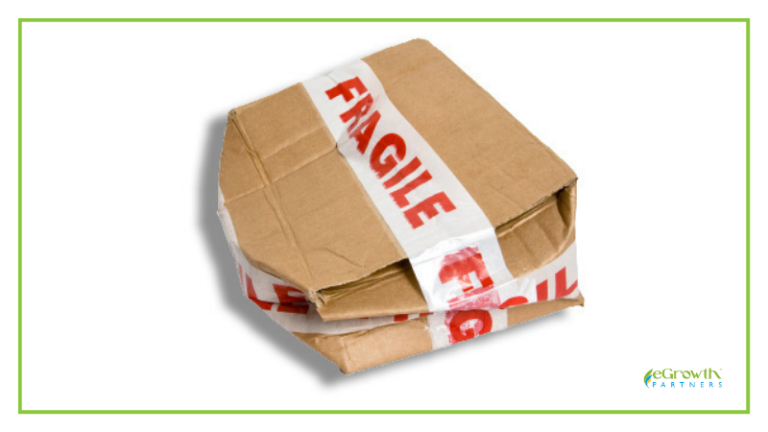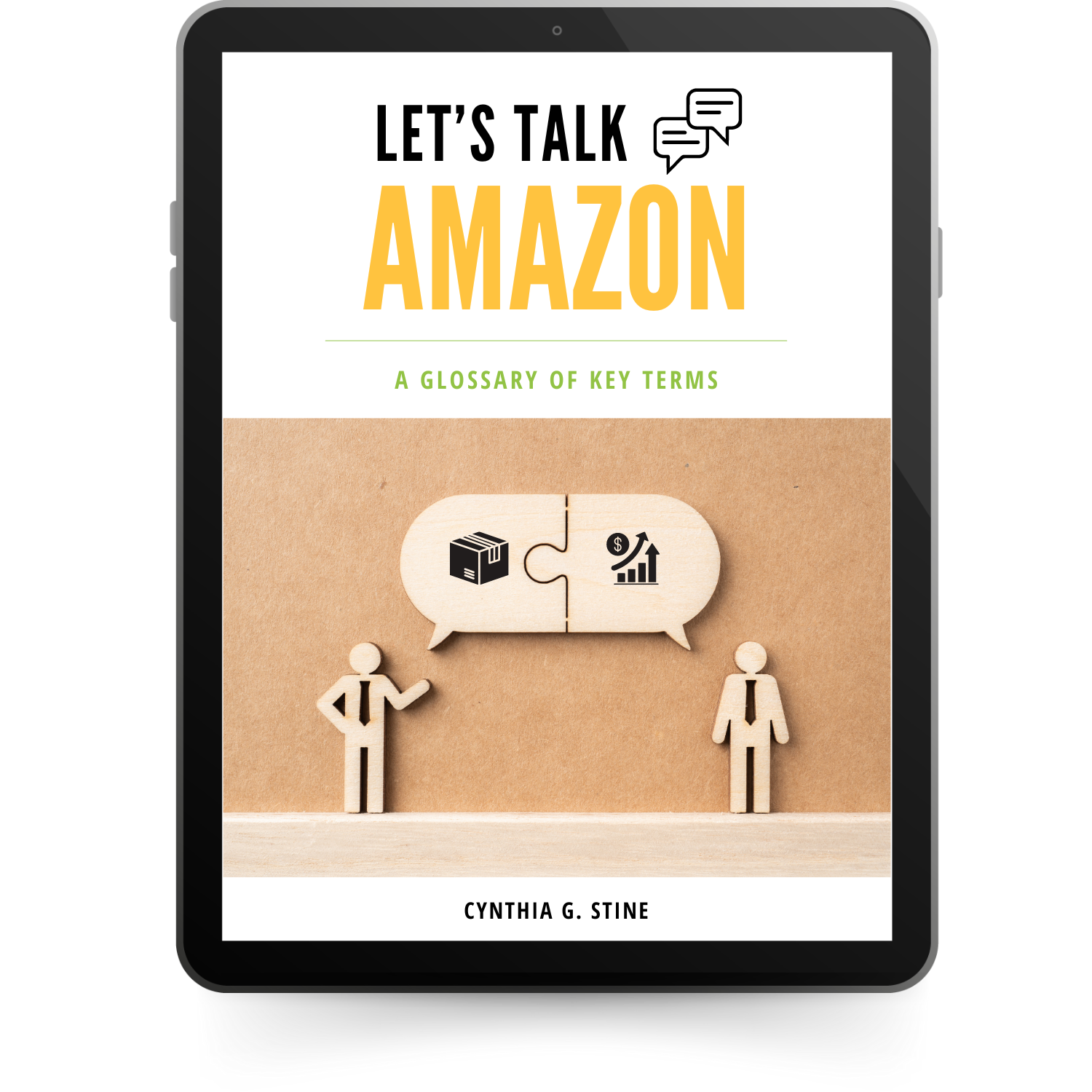This blog originally appeared April 15, 2012, but it is still relevant today. An Amazon warehouse worker (who wished to remain anonymous) wrote Amazon FBA packing mistakes that sellers make.
Ever wonder what happens to your inventory when it reaches the warehouse? This week’s guest blogger knows! She shares her best packing advice for FBA sellers based on her years of experience shipping our goods to our customers.
Make Sure Your Inventory is Easy to Find and Easy to Ship From the Amazon Warehouse
For new FBA sellers, I know you must feel overwhelmed packing your box of products to ship off to Amazon. Maybe I can help a little, I work at Amazon and I pack over 900 products a shift, I get to see the love and sometimes the frustration of trying to keep your products in perfect shape for the customer. I do not speak for the company, but I think I can give you some great tips.
First and foremost, there are rules for how everything is packed. Be sure to study them and possibly post them over your packing station. Please don’t depend on something sliding through because you just about have it right. Avoid problems by not creating them!
Think Like Your Customer
At Amazon, the ultimate customer experience is always the goal. So much so, that the customer almost takes on mythic proportions! We want the customer thrilled with their product; we want quality that is second-to-none! Every step matters from the condition of the product, to how it is boxed and shipped.
When we think customer we see a magical sparkly being that is capable of making our dreams come true! Quick go look in the mirror, did you see that magical sparkly being? You are a customer and one of your best resources when it comes to packing your product. If you don’t think you would want something how you packed it, odds are the person buying it won’t appreciate it either. It is so easy to get caught up in the over-packed, anti-theft world of brick and mortar so relax and think great customer experience with the least amount of frustration.
Test Your Inventory in Your Mind
To help visualize all the requirements for packing your products imagine putting your item in a wagon with several other items, some bigger and some smaller and then drag it down a rocky road. Will your item be all right bumping along? Can you take it and knock it off the kitchen counter onto a concrete floor? How about if a handful of salt or dirt was tossed on it? Will it shake off? Most products coming from a retail environment can survive all those tests and not have any problems. Their packaging is designed to protect the contents. You don’t need to do over kill on them. Most will be fine the way they are. The rest need a little help to keep them in awesome condition.
Get the Right Fit with Bags
I love the stuffed animals that come through! I always think of the smile a child is going to have when the box is opened! Almost all the critters are in a poly bag, occasionally I will see one that has been vacuum packed and wonder what it will fluff up to be. When packing, make sure the bag is snug as possible and try to avoid floppy corners. Remember the 3-inch rule, but tighter is better. If the barcode is on the product rather than the bag, make sure that is turned out and held in place by the bag. Once you have the bag secured at the top, if there is a lot of excess cut it off. Make sure each bag has a warning that it isn’t a toy and can cause suffocation.
When bagging anything with poly, try to get a bag that fits. If the bag is too big it is easy for it to get snagged or worse yet, be used as handle for picking up your product with the possibility of it tearing.
Items just stuck in a poly bag that fit but that are not sealed offer some protection but can make handling your product a little slippery (as in sliding out of the bag) and it has good shot of just coming off. If your FBA sticker happens to be on the bag and not the product, it can get lost fast.
Ziploc® bags are great, but use the correct size to avoid floppy corners. Make sure they are shut properly.
Light foam bags used on electronic products stay on well. Make sure when you bag, that you put the barcode out. Products are difficult to remove from foam bags without causing tears, and equally hard to put back in, so make your product scanner friendly.
Don’t Let Your Shipment Be Rejected For Lack of a Sticker
Always secure your bag. If you’re bagging a box shape, you can fold the ends up like a package and tape it. In addition, print out several sheets of the warning labels and make it one of your steps when bagging your merchandise, it is very important from a liability standpoint plus you can get your shipment rejected for forgetting it.
If you are putting an F label on the bag, try to find a spot that is flat or smooth so it doesn’t become creased.
Pop the Bubble Wrap
Don’t over-wrap. I have seen things wrapped in so many layers of bubble wrap that it took a box two times bigger than the product was supposed to go in. The product was definitely safe, but how much cost did that add? It took up space when shipped to the plant, plus the cost of the wrap and the customer had the challenge of getting it unwrapped.
If a product is that fragile, find a snug box instead and pack it tight. It will be easier for you to pack for shipping along with other items and be equally safe. Small, lightweight items wrapped in a single layer of small bubble wrap do great, but only use it if you feel they need the protection; often a small poly bag is sufficient. Use bubble wrap if you worry about dings to an item – but again, a box may be better.
Don’t Crush it with Shrink Wrap
Please practice before using shrink-wrap on a product and use an appropriate weight! It is great for bundling products, but no one wants a glob of plastic that requires tin snips to remove. Use the heavier weight for bundling heavier objects like a case of canned goods or soda. Use a lighter weight for toiletries and baby products etc.
If you are just starting out with shrink-wrap, get the tubes so you only have to deal with sealing two ends. Remember that your FBA label has to be readable through the packaging — do not obscure it with a mass of wrinkles.
Avoid Alien Cactus Bundles
Bundling products can be a challenge – think compact. Try to avoid bundling items to where they look like an alien cactus, it makes them hard to handle and it costs you money when you are trying to pack a tight box. If you bag them, try to have the items to where they don’t flop around when the package is picked up, and make sure the bag is strong enough.
Remember your products don’t have to be pretty in their arrangement but they do need to be secure. A band of shrink-wrap is great at holding together products like deodorant or dish soap. Some folks will put plastic wrap or poly bag then use tape over it to give the bundle rigidity this works great too. The more compact you pack them the easier they are going to be for you to pack too!
Your Label is Your Warehouse Lifeline
Your FBA label is your link to your product, so treat it like the gold that it is. Don’t wrap it around corners or place it where it will be creased. Make sure it has a clean barcode and the code under it is readable. Don’t trim it down or make it hard to find. The easier your product is to process the less likely you are going to have problems.
A thin barcode running along the edge of a label is easily damaged, so make sure you keep it centered. Funky, difficult to read bar codes can create problems for your merchandise at every point in the process of getting to the customer.
Life is fast at Amazon so make sure your FBA labeling is up to speed. If your printer isn’t working just right, take the time to fix it and get everything aligned properly, it will save you many headaches and much frustration.
Cover UPCs completely. If you are going to block it with your FBA sticker, make sure the UPC is unreadable. You may need to put a blank label under it. Problems arise if the wrong code gets read – it is very easy for that to happen if the edge is peeking out. Some scanners are like a hungry bear, grabbing the first barcode that gets near it!).
Don’t use a Sharpie to mark a line through the ISBN or UPC. Besides being against the rules, it is still readable. Use labels to cover them. A tip on many toys or anything that considered collectable: Do not put scotch tape on the box or mark on it in any way. Many people collect the boxes as well as the contents. The labels on the barcodes will normally peel off.
Odds and Ends
T-shirts have a tendency to wind up in a wad if they don’t have a form and the bag they are in is a little big. Try to pack those as tightly as you can, you might even consider doing a military roll.
Hard Plastic items need to be bagged, or protected in some way to prevent them from getting scuffs and mars.
If you are shipping stuff with lids, make sure those lids are going to stay on.
Protect any surface that gets dirty easily. Cases for items that are cloth, leather or vinyl are bad about gathering dirt. Bag or shrink wrap them, unless it is leather then box it.
Bag or shrink-wrap a toy that is fuzzy or a doll in a three-sided box.
Finally, never use a Sharpie marker on any of your products.
The better you pack your product the better chance you have of no problems. Sometimes this means packing less like with retail boxing. Think secure and snug if you are going to bag or wrap. If you are going to box, make sure it doesn’t rattle. Make sure your FBA label is printed clear, centered and is easy to find.
Two points I took away for me: Make it scanner friendly. No floppy corners. Put it in a box. I’ve had some bags ripped up and returned to me in the past, so the floppy corners are on my mind!




